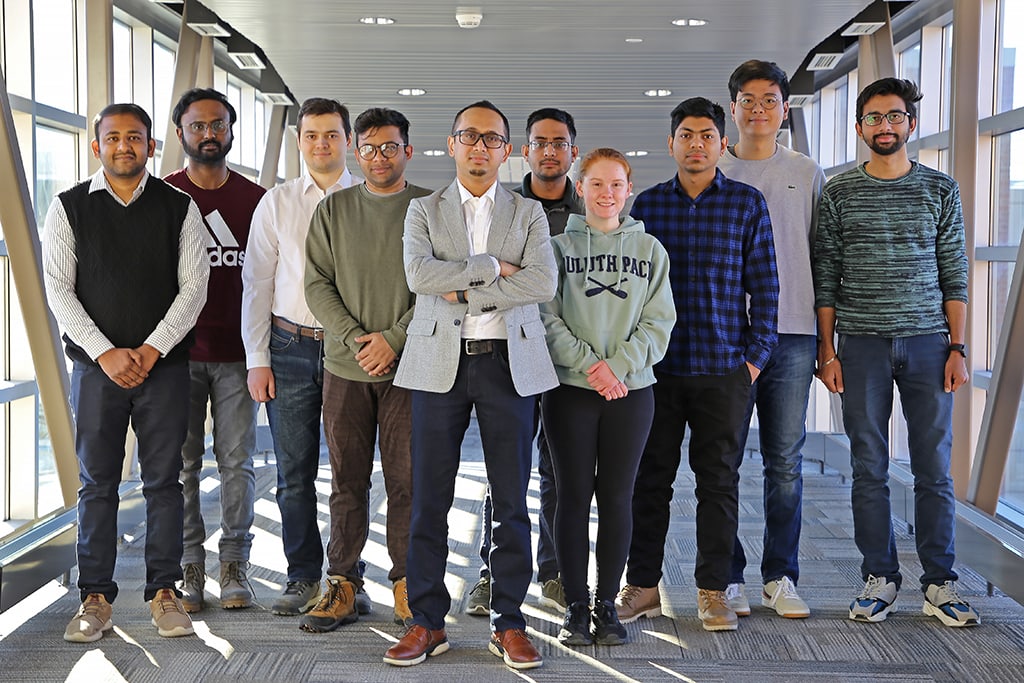UND’s Sougata Roy and his team are building next-gen components for nuclear reactors
A UND Mechanical Engineering professor has received federal funding to research new manufacturing methods for components used in nuclear reactors. Sougata Roy, assistant professor of mechanical engineering, received nearly $250,000 to study how additive manufacturing (AM) processes can be used to make the nuclear reactor components.
The research project will make use of nitrogen-strengthened austenitic steel, which will function as the feedstock for the manufacturing process. Once completed, those components will undergo an in-depth investigation into their functionality versus traditionally manufactured components. Funding for the project was awarded through the National Science Foundation. Roy will serve as principal investigator on the project.
Roy said additive manufacturing allows for the capability to control material properties near the surface of a manufactured object, as well as at its core, something not possible with traditional methods of manufacture.
“Different research groups are trying to make the components using additive manufacturing,” Roy said. “Conventionally, these components are made through casting or wrought-iron forging, but you cannot tweak the mechanical properties or the microstructure properly. In additive manufacturing, we have lot more grip on that.”
Brian Tande, dean of the UND College of Engineering and Mines, said the college has recently made investments to expand work in materials science and advanced manufacturing.
“I’m excited that this new award will add even more capabilities to the college and support the important work of Dr. Roy, one of our talented new faculty members,” Tande said. “This work will lead to advancements in metal additive manufacturing and has the potential to contribute to UND’s research efforts in energy and national security.”
This is the most recent federal funding award for additive manufacturing that Roy has received. Previously, he received a grant from the U.S. Department of Defense to study the potential of additive manufacturing for large components to be used on naval vessels. Roy is also leading two other AM projects funded by NASA.
In this most recent research project, Roy will build upon his AM experience. The part fabrication and preliminary material characterization will take place at UND, and then further analysis will be conducted using neutron diffraction at Spallation Neutron Source of Oak Ridge National Laboratory in Tennessee. Roy and a doctoral student from his research group at UND will spend the summers of 2024 and 2025 at ORNL.
Along with the manufacturing process, testing of the components will focus on the high temperature tribological properties of the components. Tribology is the science of friction, wear and lubrication, which Roy said is an inseparable field to surface engineering. This most recent research project will explore the relationships between AM, surface engineering and tribology, of which Roy has extensive research experience.
“I have been working on these three areas for the previous 13 years, and now I get the opportunity to utilize my interdisciplinary experience in a single project through this NSF award,” Roy said.
Subscribe to AM Chronicle Newsletter to stay connected: https://bit.ly/3fBZ1mP
Follow us on LinkedIn: https://bit.ly/3IjhrFq
Visit for more interesting content on additive manufacturing: https://amchronicle.com


